Outpost 2: The Construction Loop
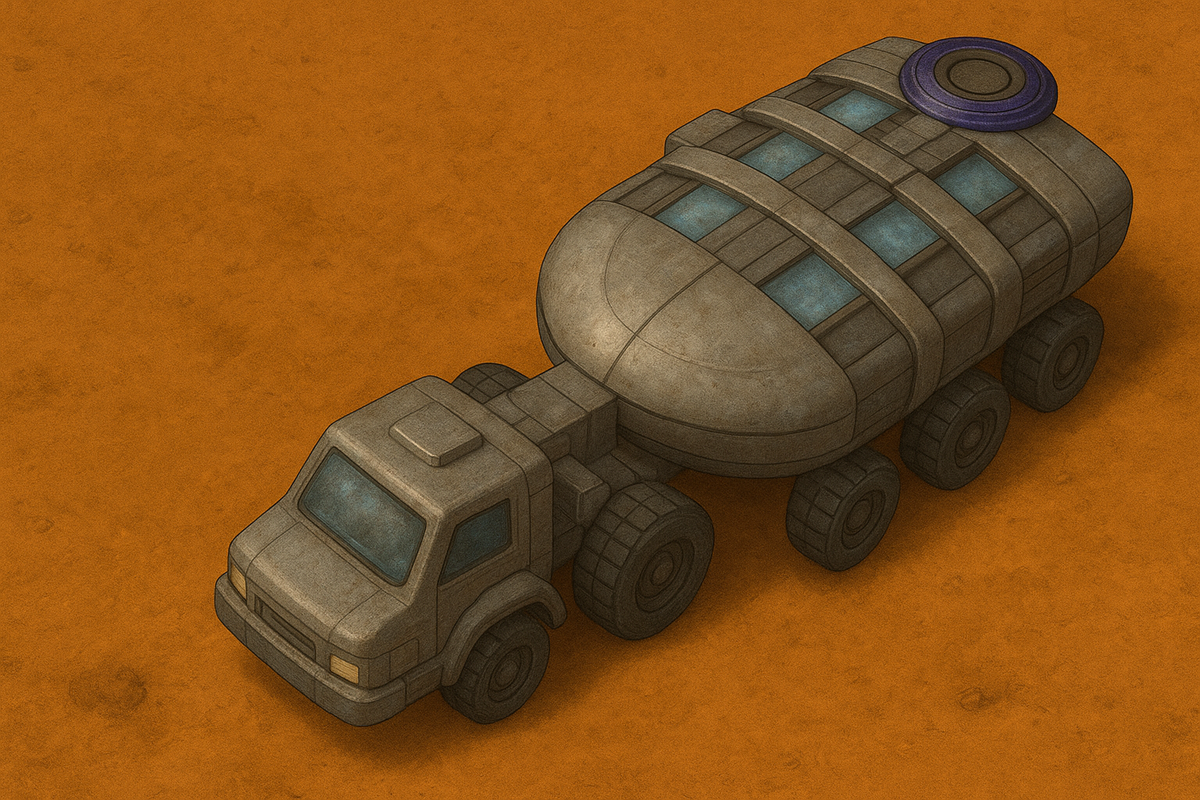
As part of my deep-dive series on Outpost 2: Divided Destiny, I’m exploring its core mechanics and comparing them to the strategy titles of its era. My goal is to better understand the underlying systems and design choices that made Outpost 2 unique. Through this analysis, I hope to uncover insights that can inform how to design engaging, thematic strategy games today—especially those that echo Outpost 2’s survival-colony setting.
This article examines the mechanics of how buildings are added to a player’s colony and the impact this has on the player experience. Building placement is a core part of the strategy game loop, and Outpost 2 handles it very differently from its peers.
In strategy games, buildings aren’t just cosmetic — they represent permanent changes to the player’s economy and unlock new options. Comparing Outpost 2’s approach to other titles highlights the trade-offs in these design choices and how they shape the overall experience.
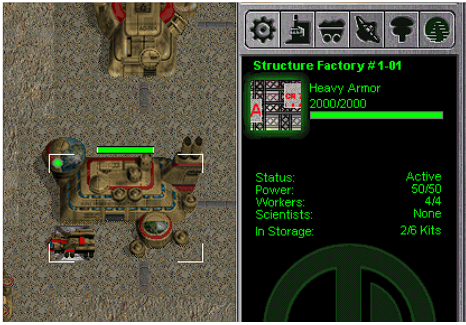

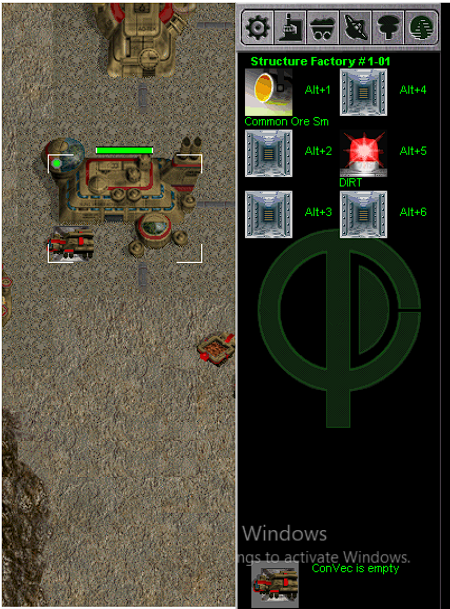
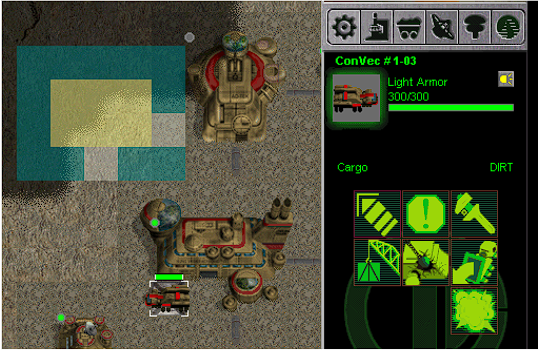
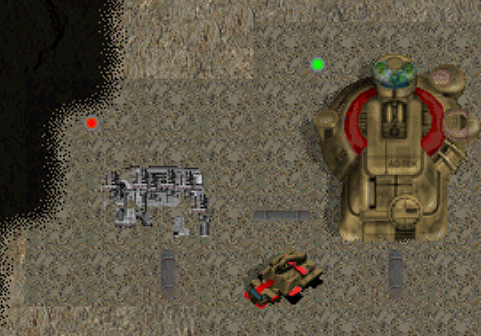

Outpost 2 Construction Order
For Outpost 2 the process for constructing a building:
- In Game Automation collect resources
- User Selects Structure Factory
- User Select Building pack to build
- Wait for building pack to complete
- User moves ConVec to structure factory
- User loads building to ConVec
- Wait for building pack to load
- User place Building
- Wait for ConVec to go to location
- Wait for ConVec to build structure
This requires three different interactions by the player to complete the process.
When compared to a contemporary such as Warcraft 2 or Age of Empires:

- In Game Automation collect resources
- User Select Peon/Peasant
- User Selects building to build
- User selects location to place building
- Wait for building to complete
A more modern colony survival game such as frostpunk:
- In Game Automation collect resources
- User Select building
- User Place build
- Wait for building to complete
These processes only require a single interaction.
Where Player Attention Goes
Outpost 2 makes building placement a more involved process than its peers. Adding a new structure demands significant commitment from the player. In Warcraft 2, building decisions are quick and reactive, designed to support immediate tactical needs. In contrast, Outpost 2 emphasizes long-term investments, where the payoff only comes after sustained commitment.
In Outpost 2, players juggle multiple tasks simultaneously. This design keeps them busy and minimizes downtime, but it also demands constant attention and follow-through to see actions completed. By contrast, games like Warcraft 2 and Frostpunk streamline building placement into a single interaction. This reduces cognitive overhead, freeing the player’s attention for other systems. In Warcraft 2, that attention shifts toward combat. In Frostpunk, it shifts toward managing the economy and social stability.
How the Building Limit Impacts Player Interactions
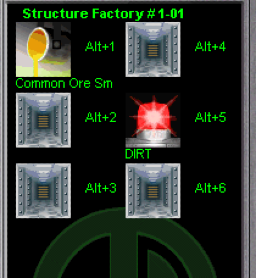
One of Outpost 2’s most distinctive mechanics is its building limit: Structure Factories can only queue a handful of constructions at a time, requiring careful investment and management through ConVecs.
This system forces players to stay attentive to their units, constantly balancing efficiency and resource allocation. The pressure to maximize factory throughput creates ongoing tension — every idle moment in the Structure Factory feels like wasted potential for the colony.
In my view, this is Outpost 2’s most valuable mechanic because it forces players to plan ahead and coordinate for long-term success. Compare this to Frostpunk, where dropping ten houses in ten clicks feels efficient but strips away the sense of investment. In Outpost 2, every structure is a commitment, not just a click.
Risk of Loss
In Warcraft 2 and Age of Empires, placing a structure carries little risk. If construction is interrupted — for example, if a peasant is killed en route — the player is refunded some or all of the building’s cost.
Outpost 2 offers no such leniency. If a ConVec is destroyed before reaching the build site, the player loses both the ConVec and the building investment. This harsh penalty forces players to actively shepherd their ConVecs, adding tension and responsibility to every construction decision.
Friction and Investment
The more involved building process in Outpost 2 reinforces its identity as a colony simulator. Each structure feels like a meaningful achievement, strengthening the game’s central theme of survival and long-term investment. By contrast, if buildings could be placed instantly — as in Warcraft 2 — players would feel less invested in their choices, since construction carries little friction or risk.
By adding friction to the construction process, Outpost 2 makes players more deliberate about where and when to expand. Warcraft 2 applies friction differently, limiting the number of units that can be selected at once and forcing players to spend more focus on battlefield micromanagement.
Outpost 2, on the other hand, allows unlimited unit selection. Here, the designers intentionally removed friction, automating away micro-management so players could concentrate on the core colony-simulation loop. This careful balance of friction and automation is what shapes the game’s unique identity.
Improvements for a Modern Audience

If Outpost 2 were remade today, how could its building mechanic be modernized without losing its identity? The original system worked in the 90s, but modern players would likely find the constant micromanagement frustrating. Contemporary strategy games rely more heavily on automation to handle routine actions, so the mechanic needs refinement.
A more approachable system could shift interaction to the Structure Factory itself. Players would still manage resources and queues, but the construction process would be streamlined:
- In Game collect resources
- User Player creates building pack in factory structure
- Wait For building structure to complete
- User Places building structure and optionally specifies the path to take.
- In Game ConVec is dispatched to build structures automatically.
This preserves the original design’s intent — build limits, forward planning, and resource management — while reducing unnecessary friction. Careful players would still be rewarded with a smoothly functioning colony, but the process would feel less like micromanagement and more like strategic investment.
In the late game, this approach would free cognitive space for higher-level colony management and combat, while building placement becomes an elegant, automated part of the background loop.
Conclusion
The building placement mechanics in Outpost 2 were designed to keep the player rooted in its colony-simulation theme. By involving players directly in the construction process, the game fostered a stronger sense of investment in each new building.
However, this mechanic hasn’t aged well. To modern players, the extra clicks and micromanagement would likely feel tedious rather than engaging. Streamlining the process — reducing it from three separate interactions to just two — would preserve the sense of investment while removing unnecessary friction.
This adjustment would also open up design space for richer colony-management systems, closer to the depth seen in modern titles like Frostpunk.

